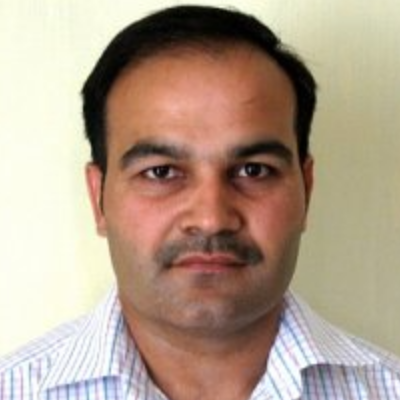
Sanjay K. Malik
Work place: Department of CSE, SRM University, Delhi-NCR, Sonepat, Haryana, India
E-mail: skmalik9876@gmail.com
Website: https://scholar.google.com/citations?user=6EeqBv4AAAAJ&hl=en
Research Interests: Text Analysis, Support Vector Machines, Sentiment Analysis, Semantic Web, Semantic Networks, Logistic Regression, Data Visualisation, Natural Language Processing
Biography
Sanjay Kumar Malik obtained the B.E degree in Computer Science and Engineering from Vaish College of Engineering, Rohtak, Haryana, India in 1999 and M.Tech degree in Computer Science and Engineering from JanardanRai Nagar Rajasthan Vidyapeeth University, Udaipur, Rajasthan, India in 2005. Ph.D. degree in Computer Science and Engineering from Deenbandhu Chhotu Ram University of Science and Technology, Murthal (Sonepat), Haryana, India in the area of Wireless Sensor Networks. He is presently working as a Professor in Department of CSE, SRM University, Delhi-NCR, Sonepat, Haryana, India
Author Articles
Proximity Measurement Technique for Gene Expression Data
By Karuna Ghai Sanjay K. Malik
DOI: https://doi.org/10.5815/ijmecs.2015.10.06, Pub. Date: 8 Oct. 2015
Data Mining is an analytical process intended to explore the data in search of consistent patterns. Due to its wide spread applications in biomedical industry and publicly available genomic data, data mining has become upcoming topic in the analysis of gene expression data. Clustering is the first step in understanding the complicated biological systems. The objective of clustering is to organize the samples into intrinsic clusters such that samples with high similarity belong to same cluster. The significance of clustering gene profiles is two-fold. Firstly, it assists in diagnosis of the disease condition and secondly it discloses the effect of certain treatment on genes. In this paper, we propose a new method to cluster gene expression data that is solely based on the concept of hierarchical clustering with a different method to compute the similarity between datasets and merge the pairs. The experimental results on two microarray data show the correctness and competence of proposed technique.
[...] Read more.ROI Based Medical Image Watermarking with Zero Distortion and Enhanced Security
By Neha Solanki Sanjay K. Malik
DOI: https://doi.org/10.5815/ijmecs.2014.10.06, Pub. Date: 8 Oct. 2014
Medical Image Watermarking has been considered as an appropriate method for enhancing the data security and content verification in medical science. For the purpose of achieving better security it is recommended to hide the data in the medical image itself that will improve the reliability of medical information system. In our paper, the work is divided in two main stages, first of all image is divided into two parts: Region of Interest that is defined as informational part of image and Region of Non Interest that is defined as non-informational part. In our work we have used Region of Non Interest to hide the data so that the informational part of the image kept safe. Watermark is encrypted by using RSA. A Discrete Wavelet Transform based approach is used for embedding the encrypted data in Region of Non Interest part of image for enhancing data security. The experimental result shows that watermark embedded by the proposed algorithm provides better security and can survive successfully under different attacks.
[...] Read more.Other Articles
Subscribe to receive issue release notifications and newsletters from MECS Press journals